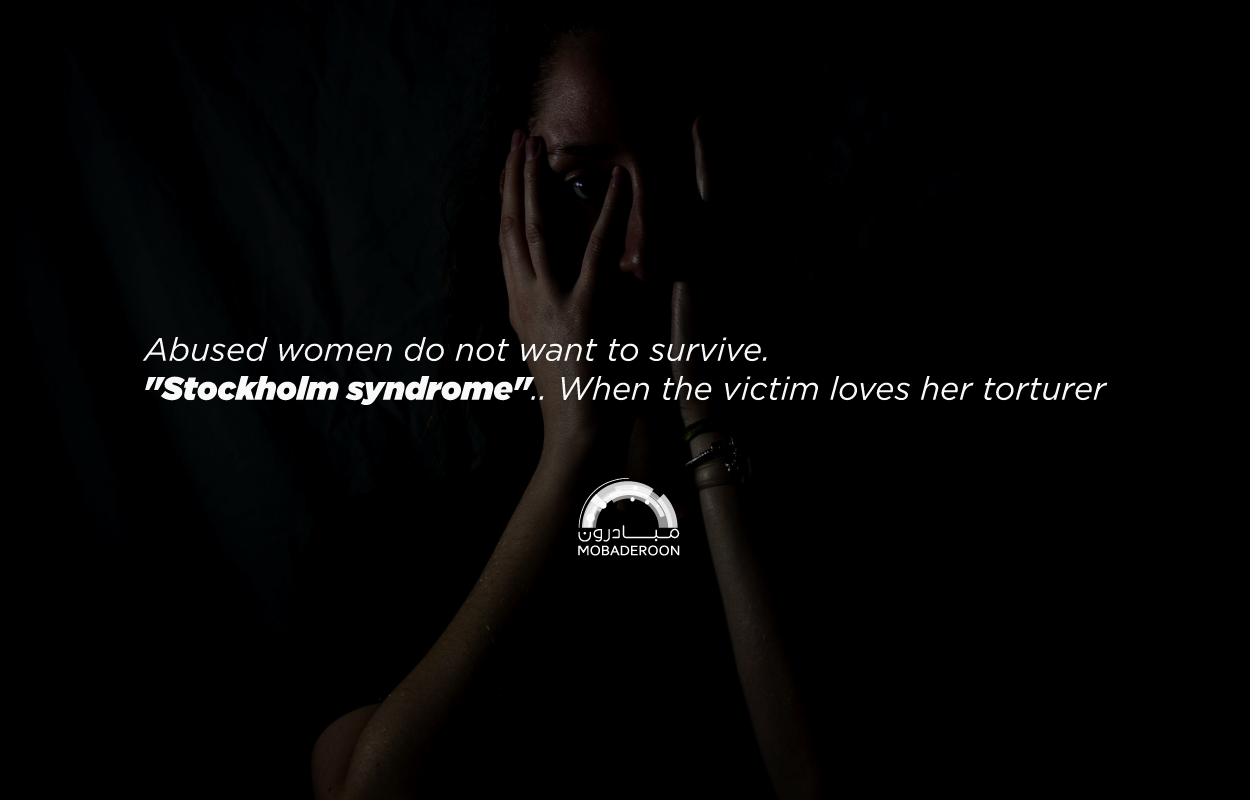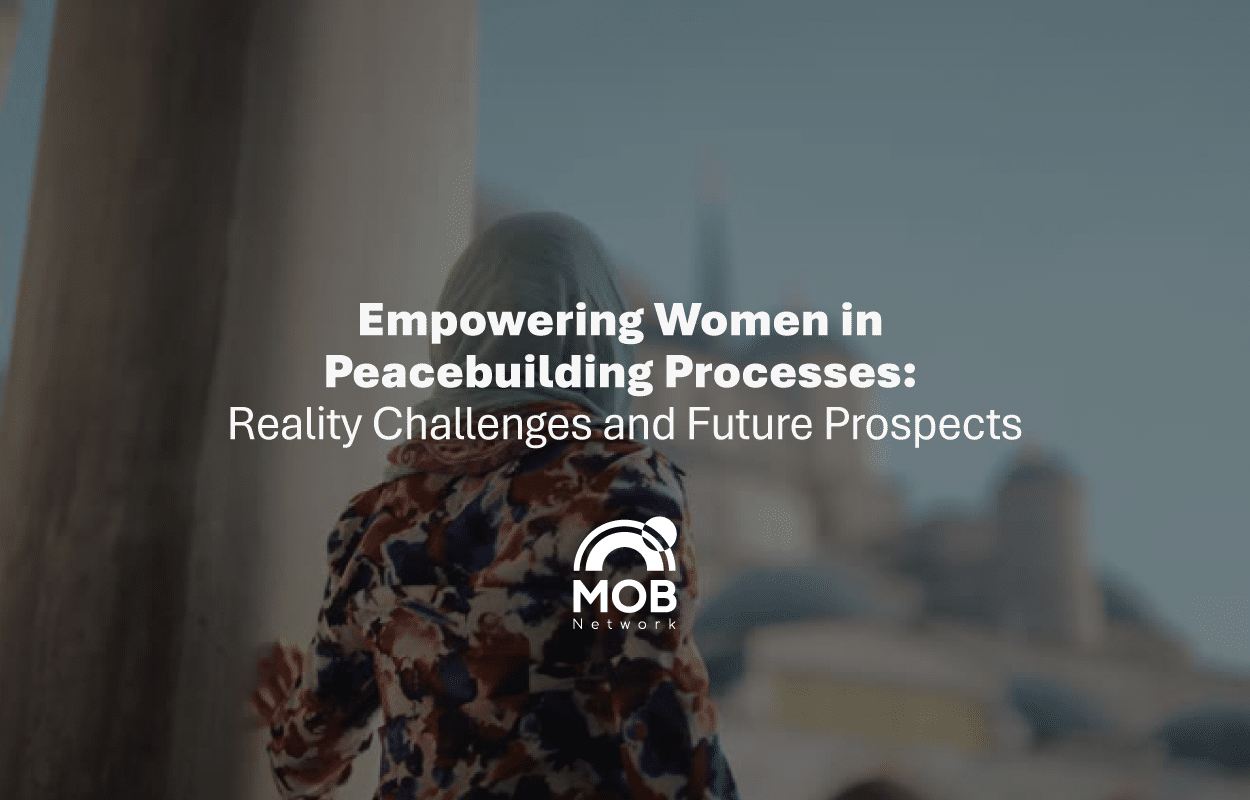She looked around nervously, mixed with fear and anxiety, as if she was hearing her name for the first time: “Madam Dina, it’s your turn.”
Her heart pounded heavily as she entered the psychological counseling department of an association working in the same area. Mrs. Dina hesitated monthly, along with her peers, to benefit from the association’s services, such as sewing workshops, health seminars, and food baskets. This time, she decided to do something different, something unlike anything she had known or experienced in her life. She felt that this association was a safe space for her, and its members worked professionally, respecting the privacy of the association’s beneficiaries and visitors.
Her jumbled thoughts and distractions were interrupted by a gentle, soothing voice that repeated the request: “Please have a seat, Madam Dina. Welcome and thank you for coming and trusting us.”
It was as if this moment was the turning point between years of tranquillity and the storm. A storm of continuous tears, crying, and pain. She cried until she was exhausted, and then she began to tell her story.
The gentle man is, “Tashtoosh”:
Dina is one of the victims of domestic violence. She lives with her “cruel husband” and her “dominant mother-in-law,” as she describes them. She goes to sleep every day after completing her household and marital duties, ending her day with a “blow” from her husband or a “slap” from her mother-in-law. Her husband’s manhood requires him to prove his masculinity to her daily through constant physical and psychological pain, making her life subject to his whims. As for her mother-in-law, she has raised her children to believe that he is “Tashtoosh,” lacking masculinity, someone who treats his wife gently or shares opinions and decisions with her. She will not realise how cunning and capable of protecting her from the outside world and society he is unless she experiences her permanent share of beating, cruelty, and harsh treatment.
Several more sessions passed in the “venting” space, as Dina called it until she received good news from the association’s management. She was informed that she could appoint a lawyer at the association’s expense to help her take legal action to reduce the unjust violent practices that had always made Dina wish for freedom from this oppressive marital prison.
And here came the surprise…
In response to violence… Unusual Reactions:
Before we continue with Mrs Dina’s story, within the context of domestic violence, we would like to remind our dear readers of what we previously discussed on our website regarding this topic, highlighting several different cases of women who have experienced violence. Specifically, the article addresses survivors of violence in various environments in Syria. Each woman shared her story and how she responded to what was happening to her.
Despite the differences in circumstances and details in the stories of the survivors, all cases intersected in their desire at some point to break free from this violence and liberate themselves, seeking to continue their lives differently and safely. However, the situation faced by the association’s team in the case of this particular woman was entirely different and unexpected, as she narrated and conveyed in the counselling sessions.
Stockholm… in our homes:
The moment the association informed Mrs Dina about their adoption of her case and the expenses associated with it was like a scorching sun that melted the accumulated ice around the mountain of truth.
“I forgot to tell you that my husband has an illness, and it seems that he behaves this way because of the medications. He is kind and competent, and he never neglects his duties towards us.”
“I want to withdraw from the sessions, or rather from the entire association. I don’t need your assistance. I don’t have time for newspaper gossip.”
“He does this to protect us from reality and people. I can’t live without him. He is the air I breathe.”
“You want to ruin my home and my family. I love my husband and accept him as he is. I am addicted to his presence by my side.”
Amid the astonishment of those concerned at the association, Dina unleashed all her screaming, accusations, and desperate attempts to defend her husband and his behaviour, despite all the evidence she provided to the team, including the physical signs of violence.
The psychological support team later discovered, through thorough research into her case with a specialist, that everything she narrated, despite its accuracy, was not intended to break free from the violence or find a solution to her destructive situation. Instead, it was to gain more sympathy, services, and benefits within the association, as she believed. They also realized that they were facing a genuine case of Stockholm syndrome.
Stockholm Syndrome: When the Victim Falls in Love with the Perpetrator.
In Stockholm, the capital of Sweden, specifically in 1973, Jan-Erik Olsson carried out a bank robbery at “Kreditbanken” in the city. He held four bank employees hostage, and later, one of his accomplices joined them. After six days of captivity, the hostages appeared to have developed a positive relationship with their captors and showed great sympathy towards them, despite the confinement and violence they experienced. Upon their release, some bank employees refused to testify against the bank robbers in court and even collected money to support their defence.
During a phone call with the Swedish Prime Minister, Olof Palme, one of the hostages mentioned that she fully trusted her captors but feared getting killed in a police raid on the building. This gave rise to the concept of Stockholm Syndrome. The term was coined by the psychiatrist and crime researcher Nils Bejerot to describe this phenomenon, and psychiatrist Frank Ochberg showed interest in the syndrome in the 1970s, defining and explaining it to the Federal Bureau of Investigation (FBI) and the British police force, Scotland Yard.
So, what is Stockholm Syndrome?

Stockholm Syndrome is a psychological response by a victim to violence or captivity. It is a phenomenon that affects individuals when they begin to empathize and cooperate with their enemy or those who have harmed them in one way or another. Over time, the individual develops positive feelings towards the perpetrators or attackers and starts exhibiting behaviours and attitudes of empathy, cooperation, clinging to them, and defending them, while rejecting attempts to break free from their control. Stockholm Syndrome includes other types of trauma where there is a connection between the aggressor and the person being harmed.
Many doctors believe that the positive feelings the victim develops towards the perpetrator are a psychological mechanism of adaptation used to survive days, weeks, or even years of shock or mistreatment.
Symptoms of Stockholm Syndrome
Victims of violence, assault, or kidnapping typically feel threatened by their attackers. However, if the aggressor or kidnapper shows them a little kindness, it can stimulate feelings of empathy towards their captors, creating positive emotions and negative feelings towards anyone who intervenes to rescue them from their situation or crisis.
Symptoms of Stockholm Syndrome include:
Believing in the humanity of the aggressor, sharing their goals and adopting their perspectives, and supporting and endorsing their behaviour and ideas.
Feeling pity for the abuser, kidnapper, or aggressor and constantly seeking justifications for their actions. For example, hearing someone say, “I know they hurt me, but I still love them and feel sorry for them” or “I know they tortured me, but they suffer from psychological problems due to a troubled or deprived childhood.”
Unwillingness to leave the abuser, aggressor, or kidnapper even when allowed to escape or flee. In other words, the victim lacks the ability or desire to engage in any behaviour that helps liberate themselves or break free from the abuser or aggressor.
Negative feelings towards family, friends, or anyone trying to rescue or support them.
Supportive behaviours towards the aggressor by the victim, sometimes even assisting the aggressor in achieving their goals at the expense of the victim. They may feel embarrassed about their feelings towards the aggressor, constantly feeling guilty towards them.
Difficulty trusting others, social withdrawal, feelings of emptiness, chronic tension, frequent nightmares, insomnia, denial, feelings of despair, depression, anxiety, loss of interest in activities, and difficulties in returning to daily life and adjusting after the traumatic experience. It may also be extremely difficult for victims to talk about their experiences as it could lead to retraumatization.
Survival instinct: Is it the cause?
If we were to search for the causes of this syndrome, most psychological studies point to the need for safety and the survival instinct. Psychologists who have studied the syndrome in cases of captivity believe that the bond initially forms when the captor threatens the life of the captive but chooses not to kill them. The captive’s relief at the removal of the threat of death turns into feelings of gratitude towards the captor for sparing their life. As demonstrated in the Stockholm bank robbery incident, it only takes a few days for this presumption to solidify, proving that the victims’ desire to survive outweighs their desire to resent the person who created the situation.
The survival instinct is the essence of Stockholm Syndrome. Victims live in involuntary dependence and interpret rare or small acts of kindness amidst terrible circumstances as positive treatment. They often become hyper-aware of their captors’ needs and demands, creating psychological bonds between the captors’ happiness and their own. The syndrome is not only characterized by a positive relationship between the captive and the captor but also by a negative attitude from the captive towards any party that threatens the relationship between them, as well as in any situation where violence, pressure, and cruelty are exerted on one party by another.
By the 21st century, psychologists expanded their understanding and study of Stockholm Syndrome from hostages to other groups, including victims of domestic violence, prisoners of war, victims of sex trafficking, abused children, and prisoners. The American Psychiatric Association does not include Stockholm Syndrome in its Diagnostic and Statistical Manual of Mental Disorders.
According to evolutionary psychology, empathy and attachment to the aggressor can be explained as a solution to the victim’s struggle to survive when they are in a helpless and submissive position. This concept has been recognized since ancient times. In primitive societies, women faced the problem of being abducted or captured by other tribes. The abduction, rape, and killing of women and their young children were common occurrences, and a woman who resisted in such situations put her life in danger. Throughout history, wars and the taking of captives were considered normal, and captives would assimilate and integrate within the tribe that captured them. This pattern of life still exists among some primitive tribes, as well as in some advanced mammals, where these beings exhibit behaviours of complete obedience, loyalty, cooperation, and sacrifice to the stronger and more dangerous individuals in the group.
In the present time, there are still types of relationships that exhibit psychological characteristics related to attachment to perpetrators of violence or kidnappers, as well as individuals with power and coercive pressure. Despite the limited research on Stockholm syndrome, scientists believe that in addition to victims of forced confinement, there are specific individuals who are more susceptible to developing it, including:
- Battered wives who experience physical abuse, humiliation, and emotional deprivation.
- Individuals subjected to pressure from coaches in sports training, initial military training, war groups, groups with clear power dynamics, or coercive pressure within fraternities or men’s clubs. This can also occur in certain sexual practices like sadism and masochism.
- Individuals who have experienced childhood abuse: Children cannot properly interpret abusive behaviour, and despite suffering abuse, they may interpret it as love or affection when treated gently.
- Victims of domestic violence: Sexual, physical, or emotional domestic violence leads to a change in the emotional bonds between the victims and their abusers, whether it be parents or other family members who perpetrate the violence.
- Trafficking victims: Individuals who are trafficked or forced into the sex trade may rely on their captors to provide their basic needs. As a result, they may develop emotional bonds as a means of survival.
Additionally, there are theories that explain Stockholm syndrome as follows:
- This theory suggests that this response is passed down through generations, as in earlier times, humans were constantly subjected to abduction or attempted murder. Researchers believe that a good relationship with captors increases the chances of our ancestors’ survival.
- Another theory explains that victims may empathize with those who mistreat them as soon as they start treating them with kindness. This empathy can secure their survival and even lead them to assist the perpetrator rather than fight against them. When they are not harmed, they may perceive the perpetrator as humane and feel gratitude towards them.
Treatment of Stockholm Syndrome

Since Stockholm Syndrome is not classified as a specific psychological disorder or listed in the official catalogue of mental disorders, there are no official treatment recommendations from medical centres and organizations. However, psychological treatment is considered the primary step in diagnosing the condition and prescribing treatment for Stockholm Syndrome, which may involve:
Cognitive-Behavioral Therapy (CBT):
CBT helps the patient understand their experience and recognize the behaviors and emotions they felt towards the perpetrator. Understanding these aspects helps them learn strategies and ways to overcome the crisis and regain their daily life and activities. The following guidelines are recommended during this treatment intervention:
Psychological education of the patient:
Psychological education involves informing Stockholm Syndrome victims about what has happened to them to help them understand their experience scientifically and objectively.
Avoid polarization:
As mentioned earlier, victims lose trust in themselves and those around them and may have negative feelings towards those who try to rescue them from their situation. Therefore, it is not advisable to convince the victim of the perpetrator’s wicked qualities, as it may polarize the victim and lead to the defence of the abuser.
Use the Socratic method:
By asking the victim several questions such as “How do you perceive the situation?” and “How do you feel?” the therapist can encourage the victim to reflect on their experiences.
Listen without judgement:
While the victim reflects on everything that has happened and recounts their experience with the abuser, it is important to listen and use critical thinking to verify the accuracy.
Avoid giving advice:
Survivors of abuse need to make their own decisions. Remember that the path to healing from abuse often involves empowering the victim to make their own decisions and restoring their self-confidence.
Discussing Stockholm Syndrome today is not just about defining it, but also about raising societal awareness of the potential severity of violence and the danger to victims of violence, especially domestic violence, justifying and concealing psychological or physically violent behaviours from their abusers as a defence mechanism.
There are many cases in our societies that resemble this syndrome, where violent behaviours become accepted and even attributed to strength and masculinity. The justifications circulated by victims of domestic and societal violence can turn them into defenders of such behaviours. As in our story, the mother justified her son’s daily violence towards his wife because she inherited these concepts, and she will pass them on to others, including the wife and many other victims of violence in our societies. This is a call for everyone to be part of the solution, each from their own platform and in their own way, with the hope that today’s “victim” will become tomorrow’s “success story” and that together, with our awareness and containment, we can stand against every act of violence and destructive behaviour.











